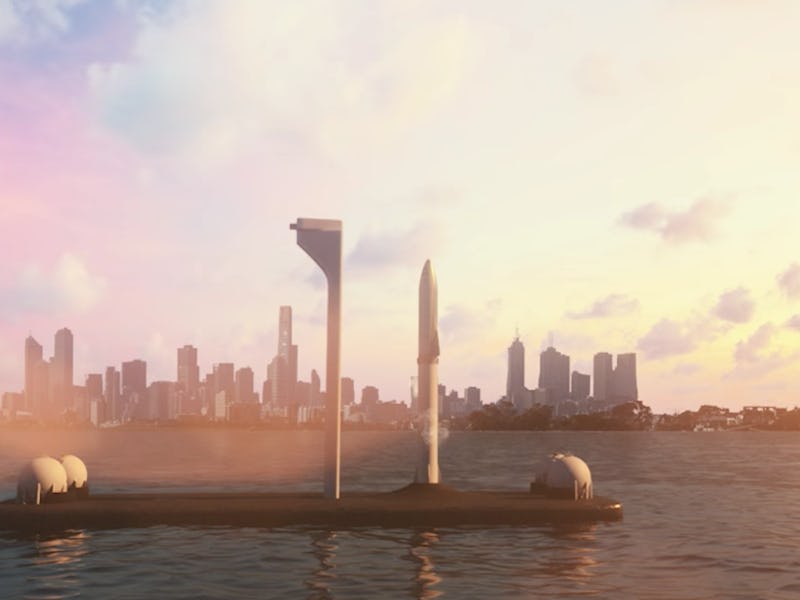SpaceX Starship: Elon Musk confirms intra-Earth spaceport and test flight
The SpaceX CEO declared that those intra-Earth flights "will be real."

The Starship, SpaceX's under-development giant rocket designed to send humans to Mars, is also set to send people around the world in less than an hour.
On Tuesday, CEO Elon Musk responded to a report about a SpaceX job listing. The post, spotted by a Twitter user called "CowboyDanPaasch," is an opening for an offshore operations engineer. This engineer will work with a team to "design and build an operational offshore rocket launch facility." Musk responded to the post by writing that "SpaceX is building floating, superheavy-class spaceports for Mars, moon & hypersonic travel around Earth."
Musk's post.
While the post is exciting news itself, Musk also suggested on Twitter that these intra-Earth flights could start taking off relatively soon:
"There will be many test flights before commercial passengers are carried. First Earth to Earth test flights might be in 2 or 3 years."
Musk's claim.
The developments suggest SpaceX's plan for intra-Earth travel is a key aspect of the plans for Starship. The rocket was first unveiled under the title "BFR" by Musk in September 2017, a fully-reusable rocket that could send over 150 tons or 100 people into space at a time. The ship would be used to start establishing a city on Mars as early as 2022, completing work by 2050. Its liquid oxygen and methane fuel would enable astronauts to refuel on Mars, then either return to Earth or continue out further.
Musk detailed plans for intra-Earth travel at the same event, which would enable passengers to get around the world in less than an hour. A flight from Los Angeles to New York, which would normally take five hours and 25 minutes, would take just 25 minutes with the Starship. London to Hong Kong, a ride that normally takes 11 hours 50 minutes, would take just 34 minutes.
"It will be real," Musk wrote Tuesday.
The spaceports form a key part of this plan. Musk suggested in November 2019 that SpaceX would have to build the spaceports around 20 miles away from the shore. This would help ensure acceptable noise levels, considering it will offer daily flights. That's quite a distance compared to regular airports: New York’s John F. Kennedy Airport is just over 12 miles from Grand Central Terminal. Musk suggested the spaceports could link up with the hyperloop, a vacuum-sealed pod transit system that Musk claims could reach 700 mph.
These would not be fun flights. While flights to Mars would allow for enough cabin space for two to three people to comfortably share a room, the intra-Earth flights would hold 1,000 people with no space for amenities. As for the price, Space Review estimated in October 2017 that it could work out to somewhere around $1,200 per person.
It's unclear whether these ocean-based spaceports would host the first Starship flights. Musk claimed earlier this month that the team was considering whether to host the first launches from an offshore location, or the firm's Boca Chica facility in Texas, or NASA's Launch Complex 39A in Florida. It seems all of these are in the running.
The Inverse analysis – SpaceX is getting serious about building its ocean-based spaceports. These platforms can be used for a variety of missions, and officials have explained before that they plan to work on several projects all at once. The firm can work on a lunar base, for example, while also working on a Mars city.
Perhaps the most exciting aspect is the evolution of the humble droneship. These have been used to catch Falcon 9 boosters as they return to Earth, but with these new Starship platforms, they could find themselves obsolete.
Update 06/17 12:40 p.m. Eastern time: An earlier version of this story described the Starship as offering "inter-Earth flights." It has since been corrected.